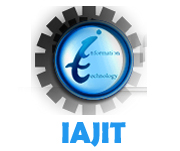Genetic-Neural Approach versus Classical Approach for Arabic Character Recognition Using Freeman Chain Features Extraction
Raed Abu Zitar
College of Information Technology, Philadelphia University, Jordan
Abstract: This article presents a hybrid technique for the recognition of typed Arabic characters. Due to its curved and continuous nature, Arabic text has to go through words segmentation, character segmentation, feature extraction, and finally character recognition. In this work, Freeman Chain (FC) technique [20, 21] is used to generate a chain for every segmented character. This chain represents the extracted features. Moreover, two approaches are presented for the classification process. In the first approach, we use a classical sequential weighing algorithm that finds the closest available “Standard Character Template” to the extracted chain. In the second approach, we use Learning Vector Quantization (LVQ) (specifically LVQ3) technique for classifying the same chain. To improve the performance of that LVQ, the Genetic Algorithm (GA) [11, 23] is invoked for some additional training. We call our neural network with the GA “GALVQ3”. For further robustness testing of both approaches, we add some artificial noise to the extracted chains and repeat simulations. In general, LVQ techniques provide higher classification rate even for cases where noise and partial observations exist. As a result, the GALVQ3 classifier is compact, online, robust, and feasible from hardware point of view.
Keywords: Arabic character recognition, neural networks, Freeman chain, feature extraction, LVQ.
Received June 6, 2004; accepted October 4, 2004

